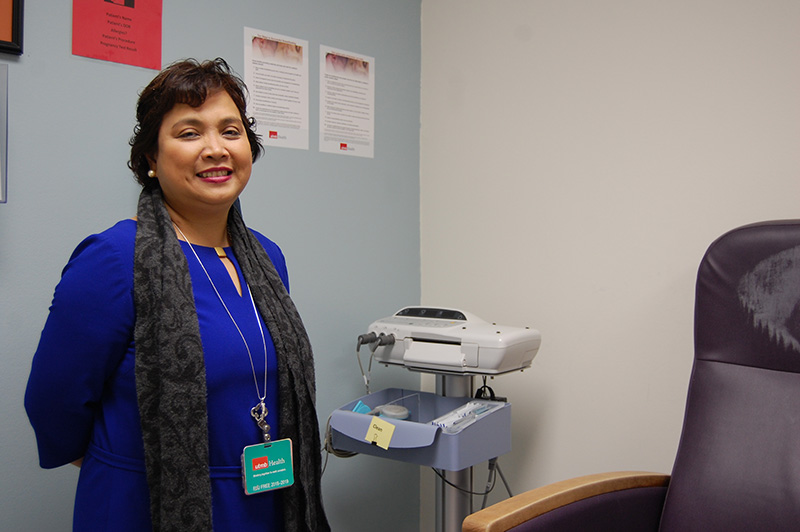New metrics, scheduling protocols part of initiative that led to national recognition

MARIA PATAWARAN’S HEALTH CARE experience at UTMB is a tangible, real-world result of the work the organization has done in recent years to improve access for all patients.
Upon returning from a trip to the Dominican Republic in November, Patawaran, regional director of UTMB’s Regional Maternal and Child Health Program, was experiencing pain in one of her hands and needed to be seen by a physician. She called the Employee Access 2 Care telephone line and quickly got an appointment, one that worked with her busy schedule.
“It was easy, seamless and flexible,” she said. “I was able to see the physician quickly and having the access when I needed the care, made me a convert. It was a great experience for me as a patient.”
Patawaran’s testimony is music to the ears of Ann O’Connell and Dr. Rex McCallum. Over the past couple of years, the two UTMB leaders have helped shepherd a sea change in how we approach the delivery of care to patients, particularly as it relates to improving access.
That work was recognized in October when UTMB’s Ambulatory Operations— medical care provided on an outpatient basis in primary and specialty care clinics—was ranked 12th of 48 academic medical centers nationally that took part in the FY18 Vizient Ambulatory Quality and Accountability survey and achieved four-star performance. A year earlier, UTMB was ranked 42nd in the survey.
McCallum, UTMB’s vice president and chief physician executive, and O’Connell, vice president of Ambulatory Operations, said the survey improvements were a result of a multi-faceted approach that included identifying the most critical performance metrics for access, creating new scheduling protocols and reallocating exam room space. In addition, providers began holding mega clinics once a week that catered strictly to new patients as a way to grow the enterprise.
In particular, Ambulatory Operations began benchmarking its access measures not only with other academic medical centers but also with providers in the highly competitive Gulf Coast regional marketplace.
“Access is its own form of patient experience, and it’s also a proxy in a patient’s mind for quality,” said O’Connell. “Sitting and waiting two weeks for an appointment in this climate is just unacceptable. Everyone believes that academic medical centers compete with other academic medical centers for patients. But we don’t. We compete with the local health systems and private practice physicians who can see patients today. That’s who we compete with in this region, so we had to measure ourselves appropriately.”
Those benchmarks helped UTMB uncover opportunities for improving patient access across the institution. One of those metrics, the median new patient lag, helped departments reduce the amount of time it takes a new patient to see a provider when they make an appointment. In fact, according to the Vizient study, UTMB saw improvement in the percentage of new patient visits in 10 out of 16 specialties over the past year, including four—primary care, neurology, rheumatology and urology—that were among the most improved in the national survey.
Another—a daily report that highlights all the appointments made for a department the previous day—enables scheduling personnel to find gaps in the calendar that they can use to offer earlier time slots to already-scheduled patients.
“This recognition was the result of a lot of work on everyone’s part,” said McCallum. “It was our clinic staff, our data analysts, the faculty members and our advanced practice providers all working together to change how they did things to get more patients, and in particular, more new patients into our clinics.
“While there is still work to do, we made great strides over the past year, and the end result is that we’re improving care for our patients and continuing to focus on excellence, which has been a hallmark of our Best Care journey. I’d like to say thank you to everyone who has been involved in this process.”